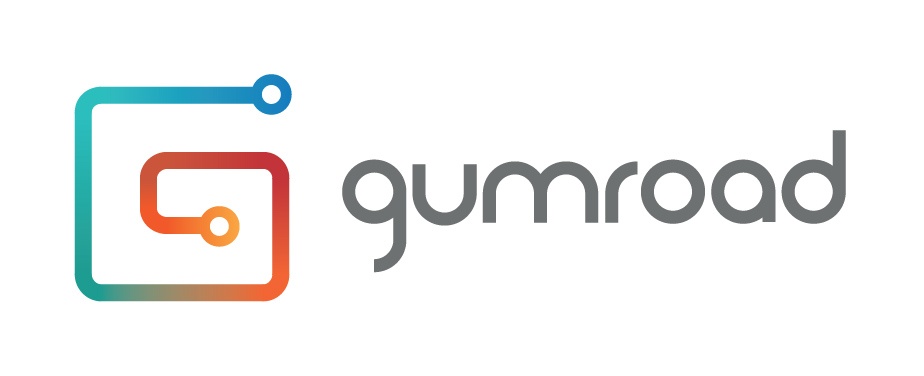
Everything you need to know about selling ebooks on your website
Selling ebooks on your website? Should you even consider this when you can sell your ebooks and print books on Amazon, Barnes and Noble, Kobo and Apple Books?
For many of us, the idea of selling ebooks on your website isn’t something that we want to focus on.
The reason for that is because it takes a huge amount of work to generate sales on your own website. At least when you compare that to selling your ebooks and print books on these retailers.
Even if you don’t do paid advertising, you can at least get your target audience to discover your book if you do book page optimization right.
There’s nothing wrong with this approach. But for me, I just don’t like the idea of having to rely on these retailers to bring sales for my books.
It’s because of this reason that I decided to put my full focus on generating direct sales on my website. In fact, I even plan to double down on it going forward.
Going back to the question, should you consider selling ebooks on your website?
Well, I would say it doesn’t hurt to give it a try. You already have your own author website. So, you may as well sell your ebooks directly to your readers.
And you also have another avenue that you can use to sell your books. It’s not so bad, after all, right?
Getting your author website ready for selling ebooks on your website
Many authors shy away from selling ebooks on their website because of how complicated it is to do the setup for selling digital products.
But it’s no longer the case any more thanks to these platforms. If you already decided to sell ebooks directly on your website, these are some of the options that are worth considering.

Gumroad
If you want a simple solution for selling ebooks on your website, consider then Gumroad is for you.
You can pretty much sell any digital products such as ebooks, music, video, and software with Gumroad. You can also sell subscriptions and video rental with Gumroad too.
Even better? You can sell as many products as you want.
The setup process is simple too. So, it doesn’t take that long for you to get things up and running. You can see it for yourself right here.
Gumroad is free to use. But they will charge you an 8.5% + $0.30 transaction fee per sale.
If you want to pay fewer transaction fees, opting for the premium version will shrink your transaction fee to 3.5% + $0.30 per sale.
If you’re making a lot of sales on your website, consider opting for the premium version. Sure, you may have to pay $10 per month, but you only pay a lot less to Gumroad compared to the free version.
Gumroad is the platform I use to sell my ebooks on my fiction author site and also on The Efficient You.

Selz
Selz works the same as Gumroad with the exception that you can use Selz to sell services.
Gumroad explicitly mentions that you can’t sell services on Gumroad. If you’re offering consultant, coaching service or live event, then Selz is the best alternative to Gumroad.
Selz doesn’t charge transaction fees. But they’re charging 2.9% + $0.30 for the credit card fee and another 2% additional fee if you’re using payment providers other than Selz Pay.
Selz doesn’t have a free plan. But you can sign up for the 14-day free trial just to see whether Selz is a perfect fit for you or not.
The basic plan starts from $29 per month. If you want a lower card rate and additional fees, consider signing up for the standard or advanced plan instead.

WooCommerce
WooCommerce is nothing like Gumroad and Selz since you need to have a self-hosted WordPress if you want to use it.
But it’s worth mentioning WooCommerce if you’re looking for the in-house solution to sell products and services without any restriction.
Since WooCommerce is a WordPress e-commerce plugin, it can feel a bit daunting to get things up and running.
As much as I’d love to recommend WooCommerce, I can only recommend you to use it if you’re using WordPress hosting as the web hosting for your author website.
The reason for that is because you’ll be keeping the customer data on your own website. So, your website needs to be as secure as your server. And WordPress hosting is capable of making your author website secure.
The basic plugin is already good enough for selling ebooks and services. But if you want more features, you can get WooCommerce extensions from the WooCommerce website.
You can get the WooCommerce plugin straight from the plugin directory.

Payhip
The way Payhip works is similar to Gumroad. But what makes Payhip different is that it has added features such as giving discounts to customers who tweet and like, providing an upgrade discount and cross-selling.
The only downside with Payhip is that you need to sign up with Stripe for accepting credit card payment. So, you may not be able to use Payhip if Stripe isn’t available in your country.
Just like Gumroad, Payhip also has a free plan where the transaction fee is 5%. If you want to pay less or no transaction fee at all, then you need to sign up for either plus or pro plan.
All plans allow you to gain access to all features in Payhip and sell unlimited products.

Shopify
Many people may not think of using Shopify to sell ebooks directly on their website since Shopify is geared towards a full-fledged online store.
But what many people don’t know is that Shopify has another pricing plan called Shopify Lite. This plan has a buy button that works more or less the same as Gumroad, Selz, and Payhip.
Unlike the usual pricing plan for Shopify, Shopify Lite plan only costs $9 per month.
What makes Shopify Lite different than any other platform I recommend so far is that its integration with Lulu Xpress. If you’re publishing your print book through Lulu, you can use Shopify to integrate with Lulu Xpress.
That means your readers can purchase your print book on Lulu without having to leave your website.
Even if you don’t use Lulu, Shopify Lite is worth considering since the interface looks a lot better than what I’ve seen so far.
I won’t deny that Shopify Lite can be a bit too much if you have yet to make any direct sales. But if you want something similar to Payhip but without having to use Stripe for accepting credit card payment, then Shopify Lite is a good alternative.

SamCart
SamCart takes things to another notch by not just making sure that you can create a beautiful product page with ease, but the page you create will also convert into sales that lead to maximizing your profit.
It’s not easy to create a product page that has a high conversion rate. But with SamCart, it already does the guesswork for you thanks to its 24+ high-converting templates.
To be honest, SamCart can be a bit too much for you if you only sell ebooks on your website. And the pricing also justifies that since the basic plan starts from $49 a month.
But if you’re selling high-ticket items such as courses, then SamCart is something that you should consider using.
What about selling print books?
What about the print books? Can you use any of these platforms to sell your print books directly to your readers?
Of course, the answer is yes since all of these platforms allow you to sell physical products as well. But you will have to purchase your print book in bulk and you have to do the fulfillment yourself. Except for Shopify, these platforms don’t have a direct integration with print-on-demand services.
Another way to sell print books directly to your readers is to use a platform like Aer.io. The good thing about Aer.io is that you can use it even if you don’t use Ingram Spark to publish your print book. But you won’t be able to use it if you live outside of the US, though.
If you’re talking about selling print books directly without having you to do the fulfillment yourself, then Aer.io is the best choice. But since Aer.io itself doesn’t seem like it’s ready for the primetime yet, we may have to wait for a little bit before we can use it to sell our print books.
